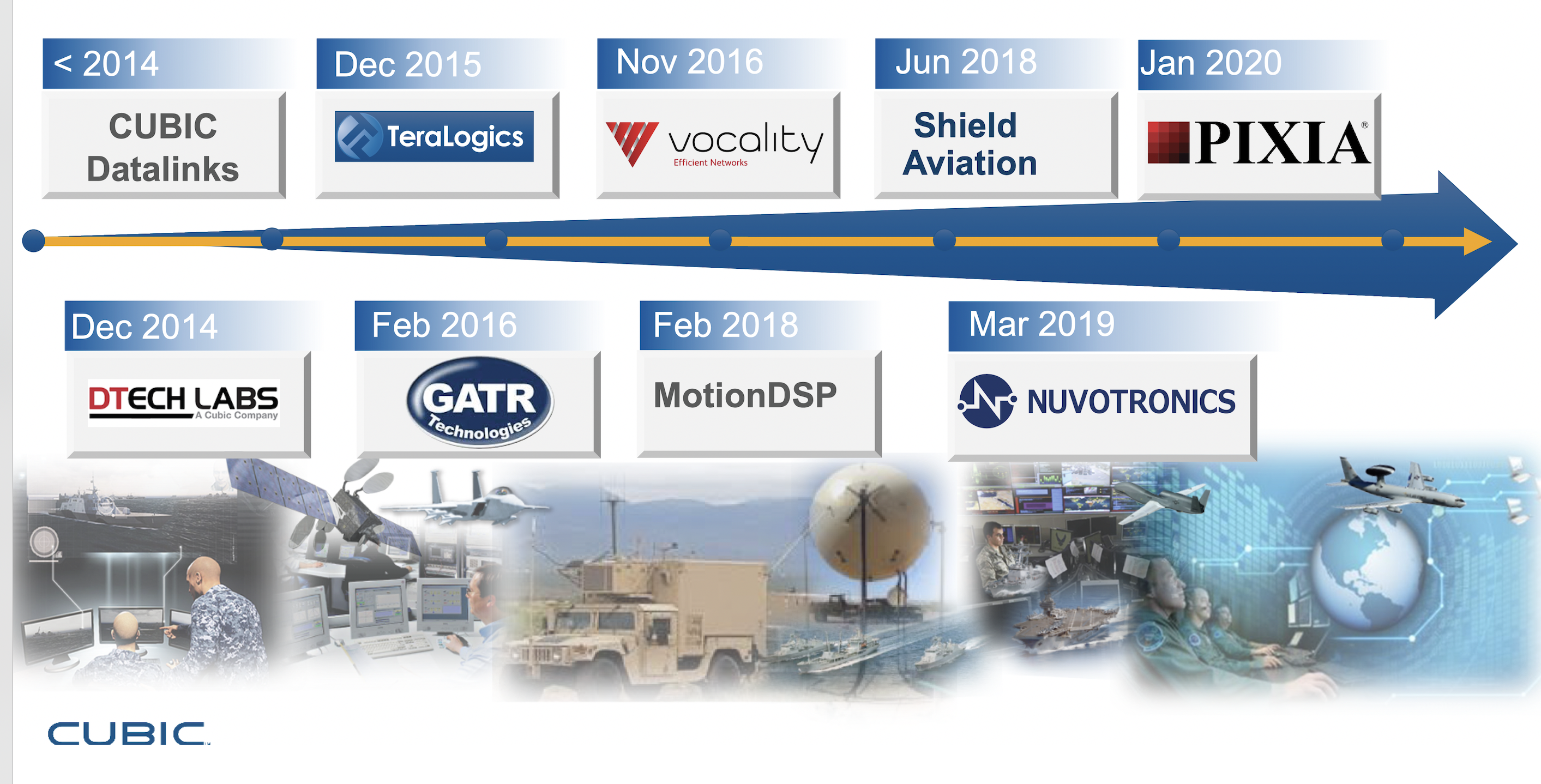By Robbin Laird
Clearly, the shift to joint warfare encompassing all domains, the impact of COVID-19 on the economy and work approaches and styles, and the growing impact of commercial investments in 5G communications or artificial intelligence in managing data are all having a significant impact on the way ahead for the U.S. military, its allies and its partners.
In the view of Mike Twyman, President of Cubic Mission Solutions, we are seeing a tsunami of change that is influencing battlespace composition, ISR solutions, protected communications and 5G.
Since he has come to Cubic, Mr. Twyman has focused on ways to build out the sector to evolve as the strategic environment changes and to shape the kind of C2/ISR capabilities the military needs both now and in the future.
In a recent interview with Twyman in his office in San Diego, he highlighted the focus of his mission solutions group and how they are contributing to the capabilities needed for the new strategic environment.
He argued that “we are focused on mission solutions, not systems. Our goal is to deliver solutions that enable future warfighting concepts.
“For example, our solutions empower C2, fueled by intelligent data, to create and close joint effect webs at machine-to-machine speeds.”
Twyman underscored that the focus has been upon shaping what he labelled “a mission chain strategy.”
“We have acquired and will continue to do so capabilities to address the entire subset of tools necessary to deliver mission chain solutions.”
Here he is referring to being able to integrate core computational, C2, ISR and other services necessary to deliver entire solutions to the military customer.
Twyman characterized the future fight as one which the combat force needs a core capability to maneuver in the communications spectrum and to have an ability to discover and share ISR and C2 information in interactive kill webs.
“The challenge is to get that relevant ISR and C2 data to where you need it and at the time you need it.”
He highlighted as well the importance of being able to work in both the commercial as well as military domains because increasingly the military is a user group, and less the definer of what the cutting-edge technology is going to be.
A key case in point is 5G.
Clearly, 5G is a significant commercial technology which will affect military networks and redefine them. Cubic is working in both the commercial and military space which Twyman thinks is critical given how significant the commercial impact of 5G has on 21st century societies.
Commercial 5G operating through millimeter wave bands will generate more bandwidth and more freedom of spectrum maneuver. It will allow for the flow through of more data at lower latencies; and there will be greater capability to protect the information being sent.
Obviously, such capabilities are both relevant and affect military communications; more as a user group than as the core definer of 5G systems themselves.
This is clearly similar to what is happening with regard to artificial intelligence (AI) technologies and decision-making aids; whereby commercial sectors are and will far outspend what the military sector will do; and it will be about leveraging commercial technologies as a user group for the military in this sector as well.
Twyman believes that the future fight will require empowering warfighters at the edge with precise access to data and shared battlespace awareness to speed decision cycles. There is enhanced computational power and services at the edge which can support more timely decisions across the warfighting domains.
He also believes that the U.S. and allied militaries are looking for non-stove piped C2 capabilities as well. He underscored that is why Cubic has built a protected wave form and made it available for the U.S. government to use as a basic standard.
“We are focused on continually innovating and seeking to deliver best-value to the government, rather than locking the government into proprietary wave forms that make stove piping inevitable.”
Twyman argued that the internet of things was a key driver as well for new C2 and ISR solutions.
And as nations seek to build trusted supply chains and shape new approaches to domestic manufacturing, being able to manage the internet of things will be enhanced in importance going ahead as well.
Cubic Mission Solutions is focused on the evolution of commercial and military space, notably in the LEO constellation world. Here they are working with a number of commercial satellite providers with regard to Cubic’s phased array communications antennas on satellites.
They are focused as well on evolving payloads and they have their own UAV as a flying battle lab to work on relevant payloads which fight into their concept of C2 decision making at the edge and kill web connectivity.
Twyman underscored that with C2 at the tactical edge becoming so critical, they are focused on ways to move away from traditional cloud-based computing to solutions which enable all warfighters at the edge to get the ISR they need at the point of attack or defense.
“We are focused on building resilient content dissemination strategies which can allow the warfighter at the edge to gain access to quality information at the relevant time.”
In short, Twyman laid out a vision and practical solutions to shaping a way ahead for the evolving infrastructure for the C2/ISR enabled integrated distributed force.
Editor’s Note: According to Cubic Mission Solutions, this is how the sector has been built over the past few years.
Cubic Datalinks (the legacy Cubic group) was the starting piece.
Cubic was a niche player in the CDL and Personnel Locator System market.
Then the sector was built with these acquisitions:
Protected Comms & ISR (air, land, sea, cyber and space)
- GATR
- Shield Aviation
- Nuvotronics
Rugged Internet of Things
- DTECH
- Vocality
Digital Intelligence (C2ISR)
- Teralogics
- MotionDSP
- Pixia
Cubic Mission Solutions Evolution:

Michael Twyman, Senior Vice President & President of Cubic Mission Solutions
In his CMS role, Twyman oversees the C4ISR businesses and strategy, including DTECH Labs, GATR Technologies, TeraLogics, XD Solutions and Cubic’s Communications & Electronics offerings.
Twyman joined Cubic in June 2014 as senior vice president of air training and secure communications, and served most recently as executive vice president, training and communications systems.
 In this role, he led the development of Cubic’s C4ISR strategy as well as growth strategies for air training and secure communications, including common datalink, avionics, communication products, restricted communications and optical solutions.
In this role, he led the development of Cubic’s C4ISR strategy as well as growth strategies for air training and secure communications, including common datalink, avionics, communication products, restricted communications and optical solutions.
Prior to Cubic, Twyman held a variety of executive leadership positions spanning more than 30 years at Northrop Grumman including sector vice president and general manager of the defense systems division, vice president of integrated C3I systems, vice president of joint network systems and vice president of communication and information systems.
Twyman graduated from California State University Long Beach with a Bachelor of Science degree in Applied Mechanics. He also holds a Master of Business Administration from George Mason University.
https://www.cubic.com/about/people/michael-twyman


